- No products in the cart.
Tsiprolet tab n / 250mg film about 10 pc
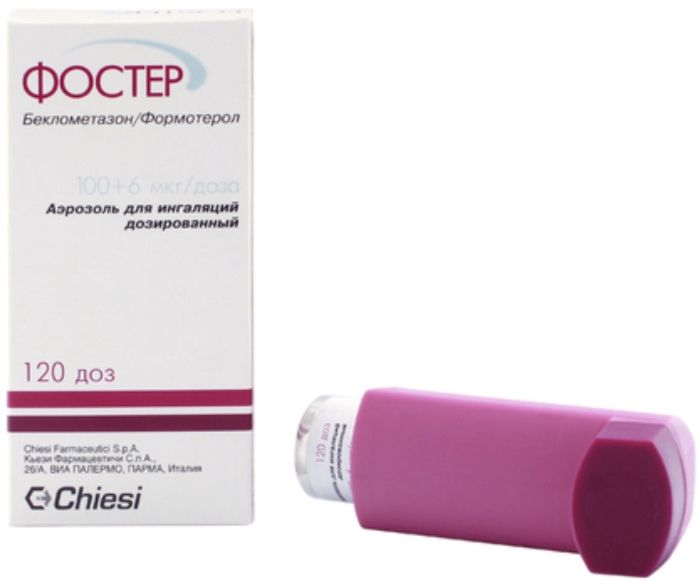
Foster spray ing. scrapper. 6mkg + 0.1mg / dose 120doz
$50.90
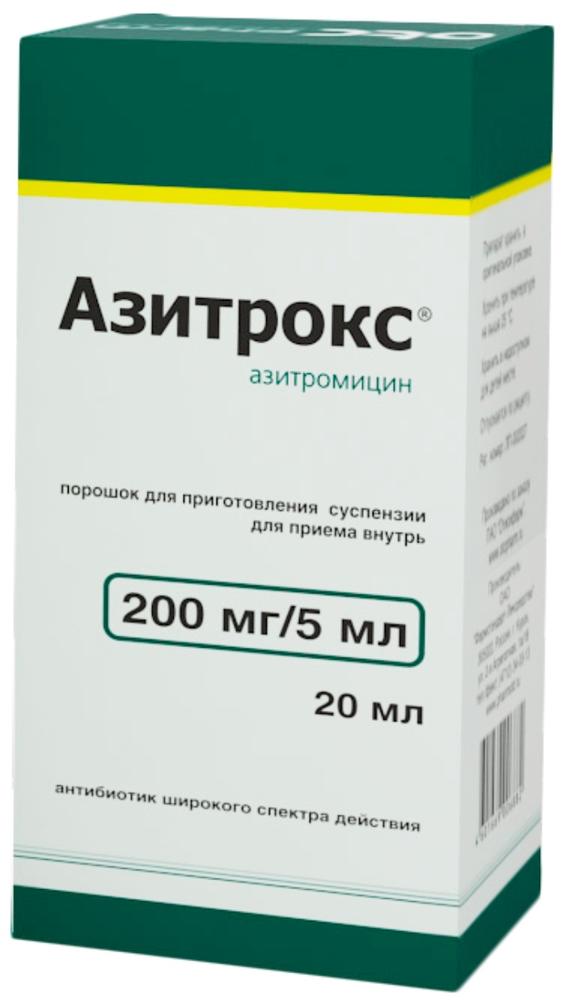
Azitroks prig.susp.dlya powder for oral 200mg / 5ml vial 15.9g one piece with the measuring spoon and a pipette
$7.09
$1.25
Tsiprolet tab n / 250mg film about 10 pc
SKU: 1979404317 Categories: Antibacterial, Antibiotics, antimicrobial, antiparasitic, Medicaments Tags: ciprofloxacin, DR.REDDIS
Description
Composition
Active substance:
1 coated tablet contains 250.0 mg Ciprofloxacin,
Excipients:
Corn starch 57.87 mg Microcrystalline cellulose 7.5 mg Croscarmellose sodium 10.0 mg Colloidal anhydrate silica 5.0 mg talc 7.0 mg magnesium stearate 3.510 mg hypromellose 6.0 mg, sorbic acid 0.1 mg Titanium dioxide 2.5 mg macrogol 1.7 mg Polysorbate 0.1 mg, 0.1 mg of dimethicone
Description:
White or almost white round biconvex tablets with a smooth surface on both sides, film-coated. Kind of on a break – white or almost white mass.
Product form:
Tablets, film-coated, 250 mg
10 tablets in PVC / aluminum blister.
1 or 2 blisters together with instructions for use in paper cartons.
Contraindications
Hypersensitivity to ciprofloxacin and other drugs of the group of quinolones and excipients, child (under 18 years – until completion of the formation of the skeleton, except treatment of complications caused by Pseudomonas aeruginosa, in children with cystic fibrosis lung from 5 to 17 years; the prophylaxis and treatment of pneumonic anthrax), simultaneous with tizanidine (risk of significant decrease in blood pressure, sleepiness), pregnancy, lactation (breast feeding).
Carefully
Expressed cerebral atherosclerosis, stroke, mental illness, epilepsy, expressed in kidney and / or liver failure, advanced age, increased risk of lengthening the interval QT or developing arrhythmia type “pirouette” (e.g., congenital elongation syndrome interval QT), heart disease (cardiac insufficiency, myocardial infarction, bradycardia), electrolyte imbalance (e.g., hypokalemia, hypomagnesemia), the simultaneous application of drugs, elongating intervals l QT (including antiarrhythmic IA and III classes, tricyclic antidepressants, macrolides, antipsychotics), the simultaneous application of inhibitors of the CYP450 1A2 (including theophylline, a methylxanthine, caffeine, duloxetine clozapine, ropinirole, olanzapine), patients with a the anamnesis on tendons defeat at the earlier treatment of quinolones, myasthenia gravis, deficiency of glucose-6-phosphate dehydrogenase.
Dosage
250 mg
Indications
Infectious-inflammatory diseases, caused by susceptible microorganisms to ciprofloxacin.
Adults: lower respiratory tract infections: acute and chronic (in the acute stage), bronchitis, pneumonia, bronchiectasis, cystic fibrosis infectious complications; infection of upper respiratory tract: acute sinusitis; kidney and urinary tract infections: cystitis, pyelonephritis; genital infections, including adnexitis, gonorrhea, prostatitis; abdominal infections (bacterial infection of the gastrointestinal tract, biliary tract); Skin and soft tissue infections: infected ulcers, wounds, burns, abscesses, cellulitis; bone and joint infections: osteomyelitis, septic arthritis; sepsis and peritonitis; infections due to immune deficiency, which occurs in the treatment of immunosuppressive drugs or in patients with neutropenia; prevention and treatment of inhalational anthrax.
Children and adolescents (5 to 17 years): complications of therapy due to Pseudomonas aeruginosa in children with cystic fibrosis of the lungs; prevention and treatment of inhalational anthrax (infection with Bacillus anthracis).
Interaction with other drugs
Drugs causing prolongation of the QT interval
Caution must be exercised while the use of ciprofloxacin, like other fluoroquinolones, patients receiving drugs that cause lengthening of the interval QT (e.g., antiarrhythmic drugs of class IA and III, tricyclic antidepressants, macrolides, antipsychotics).
Chelating
Simultaneous reception of tableted forms of ciprofloxacin and cation-containing preparations, mineral supplements containing calcium, magnesium, aluminum, iron; sucralfate, antacids, polymeric phosphate compounds (sevelamer carbonate, lanthanum) and drugs with high buffering capacity (such as didanosine tablets) containing magnesium, aluminum or calcium, reduces the absorption of ciprofloxacin. In such cases, ciprofloxacin should take 1-2 hours either before or after 4 hours after the administration of these drugs.
This restriction does not apply to drugs belonging to the class of blockers H2-histamine receptors.
Meal and milk products
It should avoid the simultaneous use of ciprofloxacin and dairy products or drinks, fortified with minerals (milk, yogurt, calcium-fortified orange juice), as this may decrease the absorption of ciprofloxacin. However, calcium, part of the other foods, did not significantly affect the absorption of ciprofloxacin.
omeprazole
The combined application of ciprofloxacin and omeprazole may experience a slight decrease in plasma Cmax and reduction in area under the curve “concentration – time» (AUC).
theophylline
Simultaneous use of ciprofloxacin and drugs containing theophylline can cause an undesirable increase in the theophylline concentration in blood plasma and, accordingly, the occurrence of theophylline-induced adverse events; In very rare cases, these adverse events can be threatening to the patient’s life. If simultaneous use of these two drugs must then recommended to perform continuous monitoring of theophylline concentration in blood plasma and, if necessary, reduce the dose of theophylline.
Other xanthine derivatives
Simultaneous use of ciprofloxacin and caffeine or pentoxifylline (okspentifillin) may lead to increased concentrations of xanthine derivatives in the blood serum.
Nonsteroidal anti-inflammatory drugs
The combination of very high doses of certain quinolones and nonsteroidal anti-inflammatory drugs (excluding acetylsalicylic acid) can provoke convulsions.
cyclosporine
With simultaneous use of ciprofloxacin and preparations containing cyclosporin, it was observed short transient increase in the concentration of creatinine in plasma. In such cases it is necessary twice a week to determine the concentration of creatinine in the blood.
Oral hypoglycemic agents
With simultaneous use of ciprofloxacin and oral hypoglycemic agents are mainly sulfonylurea drugs (e.g., glibenclamide, glimepiride), the development of hypoglycemia may be due to the enhanced effect of oral hypoglycemic agents.
probenecid
Probenecid slows the rate of excretion by the kidneys ciprofloxacin. Simultaneous use of ciprofloxacin and drugs containing probenecid leads to an increase in the serum concentration of ciprofloxacin.
phenytoin
With simultaneous application of ciprofloxacin and phenytoin was observed to change (increase or decrease) the content of phenytoin plasma. It is recommended to monitor phenytoin therapy in patients receiving both drugs, including the determination of the content of phenytoin plasma.
methotrexate
With simultaneous use of methotrexate and ciprofloxacin may be delayed renal tubular transport of methotrexate, which may be accompanied by increased concentration of methotrexate in the blood plasma. This may increase the likelihood of side effects of methotrexate. In this regard, patients receiving concurrent therapy with methotrexate and ciprofloxacin, must be installed carefully monitored.
tizanidine
In a clinical study involving healthy volunteers while the use of ciprofloxacin and drugs containing tizanidine, showed an increase in tizanidine concentration in blood plasma, increase Cmax 7 times (4 to 21 times) increase AUC by 10 times (from 6 to 24 times ). With the increase in the serum concentration of tizanidine connected hypotensive and sedative side effects. Thus, the simultaneous use of ciprofloxacin and drugs containing tizanidine, contraindicated.
duloxetine
During clinical studies it was shown that the simultaneous use of duloxetine and powerful inhibitors isoenzyme CYP450 1A2 (such as fluvoxamine) may lead to an increase in AUC and Cmax of duloxetine. Despite the absence of clinical data on possible interaction with ciprofloxacin, can foresee the probability of such an interaction while the use of ciprofloxacin and duloxetine.
ropinirole
Simultaneous application of ropinirole and ciprofloxacin, a moderate inhibitor of CYP450 1A2 isozyme, causes an increase in Cmax and AUC of ropinirole at 60 and 84%, respectively. It should control the adverse effects of ropinirole during its combined use with ciprofloxacin and within a short time after completion of the combination therapy.
lidocaine
In a study on healthy volunteers it has been found that the simultaneous application of preparations containing lidocaine and ciprofloxacin, moderate CYP450 isozyme 1A2 inhibitor leads to a decrease in lidocaine clearance by 22% when administered intravenously. Despite the good tolerability of lidocaine, while the use of ciprofloxacin possible increased side effects due to the interaction.
clozapine
With simultaneous use of clozapine and ciprofloxacin at a dose of 250 mg during 7 days was observed increase in serum concentrations of clozapine and N-desmethylclozapine 29% and 31% respectively. It should monitor the patient and if necessary, to carry out a correction of the dosing of clozapine while its combined use with ciprofloxacin and within a short time after completion of the combination therapy.
sildenafil
With simultaneous application of ciprofloxacin in healthy volunteers at a dose of 500 mg and sildenafil at a dose of 50 mg, an increase in Cmax and AUC of sildenafil 2 times. In this regard, the use of this combination is only possible after evaluation benefit / risk ratio.
Vitamin K antagonists
The combined use of ciprofloxacin and vitamin K antagonists (e.g. warfarin, acenocoumarol, phenprocoumon, fluindona) can lead to an enhancement of the anticoagulant action. The magnitude of this effect can vary depending upon concomitant infection, the age and general condition of the patient, it is difficult to estimate the influence of ciprofloxacin on increasing international normalized ratio (INR). It is often sufficient to monitor the INR joint application time of ciprofloxacin and vitamin K-antagonists as well as for a short time after completion of a combination therapy.
Overdose
Symptoms include nausea, vomiting, confusion, mental stimulation.
Treatment: the specific antidote is known. It is necessary to carefully monitor the patient’s condition, to carry out gastric lavage and other emergency measures, to ensure adequate intake of fluid.
In order to prevent the development of crystalluria recommended to monitor renal function, including urine pH and acidity.
With hemo- or peritoneal dialysis can be displayed only minor (less than 10%) amount of the drug.
pharmachologic effect
Pharmacological group:
The antimicrobial agent – fluoroquinolone.
Pharmacodynamics:
Ciprofloxacin is a synthetic antibacterial drug broad spectrum fluoroquinolone.
Mechanism of action
Ciprofloxacin possesses in vitro activity against a broad spectrum of gram-negative and gram-positive microorganisms. The bactericidal effect of ciprofloxacin is carried out by inhibiting bacterial type II topoisomerases (topoisomerase II (DNA gyrase) and topoisomerase IV), which are required for replication, transcription, repair and recombination of the bacterial DNA.
mechanisms of resistance
In vitro resistance to ciprofloxacin is often caused by point mutations bacterial topoisomerase and DNA gyrase poison, and develops slowly through multistage mutations. Single mutations can lead to the reduction of sensitivity rather than the development of clinical resistance, but multiple mutations generally result in the development of clinical resistance to ciprofloxacin and cross-resistance to drugs quinolone series. Resistance to ciprofloxacin, as to many other antimicrobial agents, can be generated by reducing the permeability of the bacterial cell wall (as it often happens in the case of Pseudomonas aeruginosa) and / or activation of excretion from microbial cells (efflux). It reported on the development of resistance caused by localized on plasmids encoding gene Qnr. Resistance mechanisms that lead to inactivation of penicillins, cephalosporins, aminoglycoside, macrolide and tetracycline, probably not violate the antibacterial activity of ciprofloxacin. Microorganisms that are resistant to these drugs may be susceptible to ciprofloxacin. Minimal bactericidal concentration (MBC) generally does not exceed the minimum inhibitory concentration (MIC) by more than 2 times.
Sensitivity testing in vitro
Reproducible criteria for the study of sensitivity to ciprofloxacin, approved by the European Committee for the determination of sensitivity to antibiotics (EUCAST), are presented below.
The European Committee for the definition of sensitivity to antibiotics. Border MIC values (mg / l) in a clinical setting for ciprofloxacin
microorganism | Sensitive [mg / l] | Resistance [mg / l]
Enterobacteriaceae |? 0,5 | > 1
Pseudomonas spp. | ? 0,5 | > 1
Acinetobacter spp. | ? 1 | > 1
Staphylococcus1 spp. | ? 1 | > 1
Streptococcus pneumoniae2 | 2
Haemophilus influenzae and Moraxella catarrhalis3 | ? 0,5 |> 0,5
Neisseria gonorrhoeae | ? 0,03 | > 0.06
Neisseria meningitidis |? 0,03 | > 0.06
Boundary values are not related to the kinds of mikroorganizmov4 | ? 0,5 |> 1
1 – Staphylococcus spp. – frontier values for ciprofloxacin and ofloxacin relate to high-dose therapy.
2 – Streptococcus pneumoniae – wild type S. pneumoniae are not considered susceptible to ciprofloxacin and thus belongs to the category of microorganisms with an intermediate sensitivity.
3 – Strains with MIC values greater than the threshold value for sensitive / moderately sensitive, very rare, and messages were not about them so far. Tests for the identification and susceptibility to antimicrobials when detecting such colonies must be repeated and the results should be confirmed by analysis of the colonies in the reference laboratory. Until then, until you have obtained evidence of clinical response for confirmed isolates with MIC values greater than are currently in use resistance threshold, they should be considered as resistant. Haemophilus spp./Moraxella spp. – possibly identifying Haemophilus influenzae strains with low sensitivity to fluoroquinolones (ciprofloxacin MIC – 0,125-0,5 mg / l). Clinical evidence of resistance values at low respiratory tract infections caused by H. Influenzae, no.
4 – Boundary values are not related to the kinds of microorganisms, determined mainly on the basis of pharmacokinetic / pharmacodynamic and are independent of MIC distributions of specific species. They only apply to species for which the threshold of sensitivity, specificity for the species has not been determined, and not for those species for which is not recommended for susceptibility testing. For certain strains spread of acquired resistance may vary depending on geographic region and over time. In this connection, it is desirable to have the local information on resistance, especially in the treatment of serious infections.
Institute These clinical and laboratory standards for the border values of MIC (mg / L), and diffusion test (mm) using a disc containing 5 mg of ciprofloxacin are shown in the table below.
?
Institute of Clinical and Laboratory Standards. Border MIC values (mg / l) and diffusion test (mm) using a drive
Microorganism | sensitive | Intermediate | resistant Enterobacteriaceae
|
Conditions of supply of pharmacies
On prescription.
side effects
Depending on the frequency of occurrence of the following groups of side effects: frequent (> 1%, and
special instructions
Severe infections, staphylococcal infections and infections caused by Gram-positive and anaerobic bacteria
In the treatment of severe infections, staphylococcal infections and infections caused by anaerobic bacteria, ciprofloxacin to be used in combination with appropriate antibacterial agents.
Infections caused by Streptococcus pneumoniae
Ciprofloxacin is not recommended for the treatment of infections caused by Streptococcus pneumoniae, because of the limited effectiveness against the pathogen.
reproductive tract infections
When genital infections allegedly caused by strains of Neisseria gonorrhoeae, resistance to fluoroquinolones, should take into account local information on resistance to ciprofloxacin and to confirm the sensitivity of the laboratory tests of the pathogen.
Violations of the heart
Ciprofloxacin has an effect on lengthening the interval QT. Given that women are characterized by a large average duration of the QT interval compared with men, they are more sensitive to drugs that cause prolongation of the QT interval.
У пожилых пациентов также отмечается повышенная чувствительность к действию подобных препаратов. Следует с осторожностью использовать ципрофлоксацин в комбинации с препаратами, удлиняющими интервал QT (например, антиаритмическими препаратами классов IA и III, трициклическими антидепрессантами, макролидами, нейролептиками), или у пациентов с повышенным риском удлинения интервала QT или развития аритмиии типа «пируэт» (например, синдром врожденного удлинения интервала QT), заболеваниями сердца (сердечная недостаточность, инфаркт миокарда, брадикардия), некорректированным электролитным дисбалансом (например, при гипокалиемии, гипомагниемии).
Use in children
Ципрофлоксацин, как и другие препараты этого класса, вызывает артропатию крупных суставов у животных. При анализе существующих на сегодняшний день данных о безопасности применения ципрофлоксацина у детей до 18 лет, большинство из которых имеют муковисцидоз легких, не установлено связи между повреждением хряща или суставов с приемом препарата.
Не рекомендуется использовать ципрофлоксацин у детей для лечения других заболеваний, кроме лечения осложнений муковисцидоза легких (у детей от 5 до 17 лет), связанных с Pseudomonas aeruginosa и для лечения и профилактики легочной формы сибирской язвы.
Hypersensitivity
В редких случаях после первого применения могут возникнуть анафилактические реакции вплоть до анафилактического шока. В этих случаях применение ципрофлоксацина следует немедленно прекратить и провести соответствующее лечение.
Желудочно-кишечный тракт
If you encounter during or after the treatment of severe and prolonged diarrhea should exclude the diagnosis of pseudomembranous colitis, which requires immediate discontinuation of the drug and appropriate treatment.
Гепатобилиарная система
При применении ципрофлоксацина отмечались случаи некроза печени и жизнеугрожающей печеночной недостаточности. При наличии таких симптомов заболеваний печени как анорексия, желтуха, потемнение мочи, зуд, болезненный живот, применение ципрофлоксацина следует прекратить.
У пациентов, принимающих ципрофлоксацин и перенесших заболевание печени, может наблюдаться временное повышение активности «печеночных» трансаминаз и щелочной фосфатазы или холестатическая желтуха.
Опорно-двигательный аппарат
Пациентам с тяжелой миастенией gravis ципрофлоксацин следует применять с осторожностью, так как возможно обострение симптомов.
При первых признаках тендинита (болезненный отек, воспаление в области сустава) лечение ципрофлоксацином следует прекратить и исключить физические нагрузки.
При применении ципрофлоксацина могут отмечаться случаи тендинита и разрыва сухожилий (преимущественно ахиллова сухожилия), иногда двустороннего, уже в течение первых 48 часов после начала терапии, воспаление и разрыв сухожилия могут возникать даже через несколько месяцев после прекращения лечения ципрофлоксацином. У пожилых пациентов и у пациентов с заболеваниями сухожилий, одновременно получающих лечение глюкокортикостероидами, существует повышенный риск возникновения тендинопатии.
Ципрофлоксацин следует применять с осторожностью у пациентов, имеющих в анамнезе указания на заболевания сухожилий, связанные с приемом хинолонов.
Nervous system
Ципрофлоксацин, как и другие фторхинолоны, может провоцировать судороги и снижать порог судорожной готовности. Пациентам с эпилепсией и перенесшим заболевания ЦНС (снижение порога судорожной готовности, судорожные припадки в анамнезе, нарушения мозгового кровообращения, органические поражения головного мозга или инсульт) в связи с угрозой развития побочных реакций со стороны ЦНС, ципрофлоксацин следует применять только после оценки соотношения польза/риск.
При применении ципрофлоксацина сообщалось о случаях развития эпилептического статуса.
При возникновении судорог применение препарата следует прекратить. Психические реакции могут возникнуть даже после первого применения фторхинолонов, включая ципрофлоксацин. В редких случаях депрессия или психотические реакции могут прогрессировать в суицидальные мысли и самоповреждающее поведение, такие как попытки суицида, в том числе свершившиеся, если у пациента развивается одна из этих реакций, следует прекратить прием препарата и сообщить об этом врачу.
У пациентов, принимающих фторхинолоны, отмечались случаи сенсорной или сенсомоторной нейропатии. При возникновении таких симптомов как боль, жжение, покалывание, онемение, слабость, пациенту следует проинформировать врача прежде, чем продолжить применение ципрофлоксацина.
skin
В период лечения следует избегать контакта с прямыми солнечными лучами и УФ-облучением в солярии.
Цитохром Р450
Ципрофлоксацин является умеренным ингибитором изоферментов CYP450 1А2. Следует соблюдать осторожность при одновременном применении ципрофлоксацина и препаратов, метаболизируемых данными ферментами (в том числе тизанидин, теофиллин, метилксантин, кофеин, дулоксетин, ропинирол, клозапин, оланзапин), так как увеличение концентрации этих препаратов в сыворотке крови, обусловленное ингибированием их метаболизма ципрофлоксацином, может вызвать специфические нежелательные реакции.
Профилактика кристаллурии
Во избежание развития кристаллурии недопустимо превышение рекомендованной суточной дозы, необходимо также достаточное потребление жидкости и поддержание кислой реакции мочи.
Диагностика инфекции, обусловленной Mycobacterium spp.
В условиях in vitro ципрофлоксацин может мешать бактериологическому исследованию Mycobacterium tuberculosis, подавляя ее рост, что может приводить к ложноотрицательным результатам при диагностике данного возбудителя у пациентов, принимающих ципрофлоксацин.
Effect on the ability to drive mechanisms and
During the period of treatment must be careful when driving and occupation of other potentially hazardous activities that require high concentration and psychomotor speed reactions.
Storage conditions
In the dark place at a temperature not higher than 25 C.
Keep out of the reach of children!.
Dosing and Administration
Таблетки следует принимать внутрь, независимо от приема пищи, не разжевывая, запивая небольшим количеством жидкости. Если препарат применяется натощак, активная субстанция всасывается быстрее. В этом случае таблетки не следует запивать молочными продуктами или напитками, обогащенными кальцием (например, молоко, йогурт, соки с повышенным содержанием кальция). Кальций, содержащийся в обычной пище, не влияет на всасывание ципрофлоксацина.
Рекомендуемый режим дозирования:
Взрослые – инфекции дыхательных путей (в зависимости от тяжести инфекции и состояния пациента): от 500 мг 2 раза в сутки до 750 мг 2 раза в сутки; – инфекции мочеполовой системы: острые, неосложненные: от 250 мг 2 раза в сутки до 500 мг 2 раза в сутки; цистит у женщин (до менопаузы): 500 мг 1 раз в сутки; осложненные: от 500 мг 2 раза в сутки до 750 мг 2 раза в сутки; инфекции половых органов (кроме гонореи): от 500 мг 2 раза в сутки до 750 мг 2 раза в сутки; гонорея: 500 мг 1 раз в сутки однократно; – диарея: 500 мг 2 раза в сутки; – другие инфекции (см. раздел «Показания к применению»): 500 мг 2 раза в сутки; особо тяжелые, представляющие угрозу жизни (в особенности при наличии Pseudomonasspp., Staphylococcusspp., Streptococcusspp. ), в т.ч. стрептококковая пневмония, инфекции костей и суставов, септицемия, перитонит: 750 мг 2 раза в сутки.
Режим дозирования у пациентов пожилого возраста (после 65 лет): пациентам пожилого возраста следует назначать более низкие дозы ципрофлоксацина в зависимости от тяжести заболевания и показателя клиренса креатинина.
Режим дозирования для пациентов с почечной недостаточностью: – при клиренсе креатинина от 30 до 60 мл/мин/1,73 м2 или его концентрации в плазме крови от 1,4 до 1,9 мг/100 мл максимальная суточная доза ципрофлоксацина – 1000 мг; – при клиренсе креатинина ниже 30 мл/мин/1,73 м2 или концентрации в плазме крови от 2 мг/100 мл или более максимальная суточная доза ципрофлоксацина – 500 мг; – пациенты с почечной недостаточностью на гемодиализе: при клиренсе креатинина от 30 до 60 мл/мин/1,73 м2 или его концентрации в плазме крови от 1,4 до 1,9 мг/100 мл максимальная суточная доза ципрофлоксацина – 1000 мг; при клиренсе креатинина 30 мл/мин/1,73 м2 и менее или его концентрации в плазме крови от 2 мг/100 мл или более максимальная суточная доза ципрофлоксацина – 500 мг. В дни проведения гемодиализа ципрофлоксацин принимают после процедуры.
Амбулаторные пациенты с почечной недостаточностью, находящиеся на непрерывном перитонеальном диализе: максимальная суточная ципрофлоксацина – 500 мг.
Пациенты с печеночной недостаточностью: коррекция дозы не требуется.
Продолжительность лечения зависит от тяжести заболевания, клинического и бактериологического контроля. Важно продолжать лечение систематически не менее 3 дней после исчезновения лихорадки или других клинических симптомов. Средняя продолжительность лечения: 1 день- при острой неосложненной гонорее и цистите; до 7 дней-при инфекциях почек, мочевыводящих путей, интраабдоминальных инфекциях; весь период нейтропении у пациентов с ослабленным иммунитетом; не более 2 месяцев-при остеомиелите; от 7 до 14 дней-при других инфекциях. При инфекциях, вызванных Streptococcusspp., из-за риска поздних осложнений лечение должно продолжаться не менее 10 дней; при инфекциях, вызванных Chlamydiaspp., лечение также следует продолжать не менее 10 дней.
Для профилактики и лечения легочной формы сибирской язвы – по 500 мг 2 раза в сутки в течение 60 дней.
Прием препарата следует начинать сразу после предполагаемого или подтвержденного инфицирования.
Дети и подростки
При отсутствии других назначений следует придерживаться следующего режима дозирования:
При лечении осложнений, вызванных Pseudomonas aeruginosa, у детей от 5 до 17 лет с муковисцидозом легких – 20 мг/кг 2 раза в сутки (максимальная доза 1500 мг). Продолжительность лечения – 10-14 дней.
При легочной форме сибирской язвы (профилактика и лечение) – 15 мг/кг 2 раза в сутки. Максимальная разовая доза – 500 мг, суточная – 1000 мг. Общая продолжительность приема ципрофлоксацина – 60 дней.
Дети с нарушениями функции почек
Нет какой-либо информации о схеме корректировки дозы для детей с нарушениями функции почек.
Information
Appearance may differ from that depicted in the picture. There are contraindications. You need to read the manual or consult with a specialist
Additional information
| Weight | 0.100 kg |
|---|---|
| Manufacturer | DR.REDDIS |

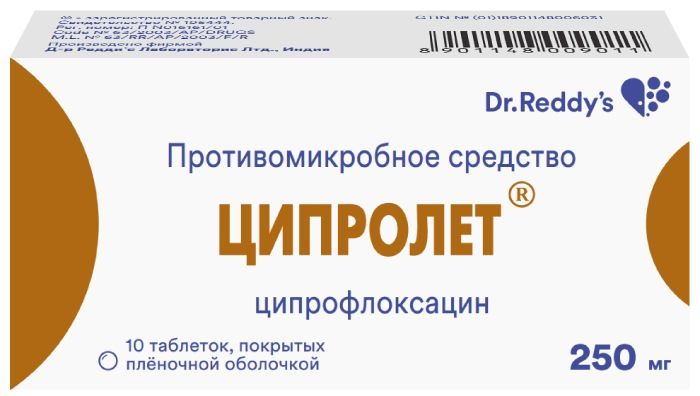

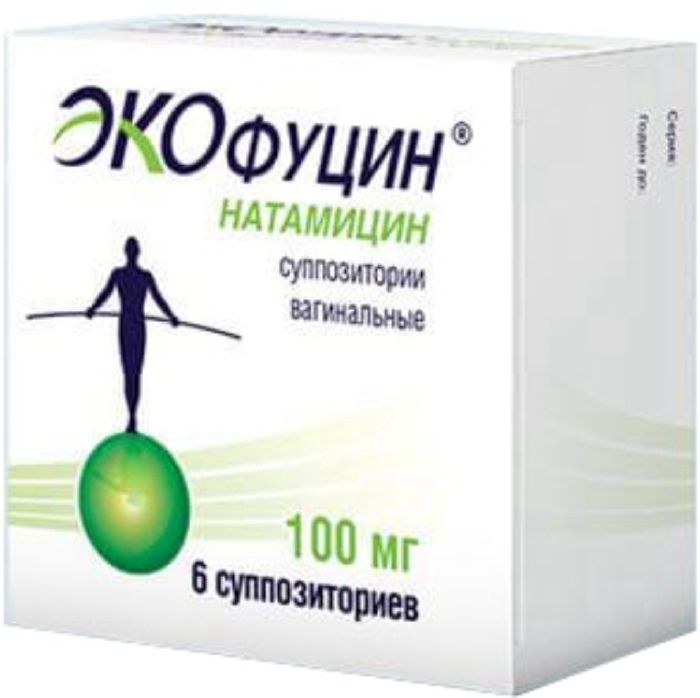
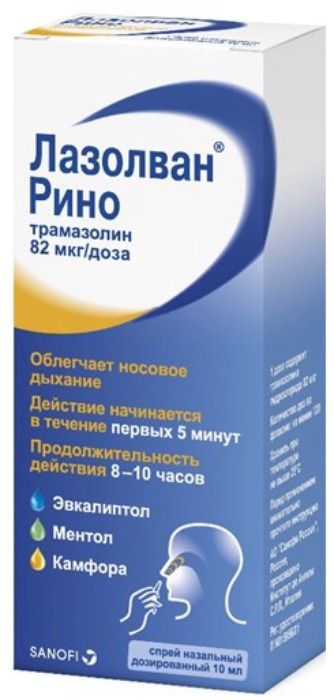

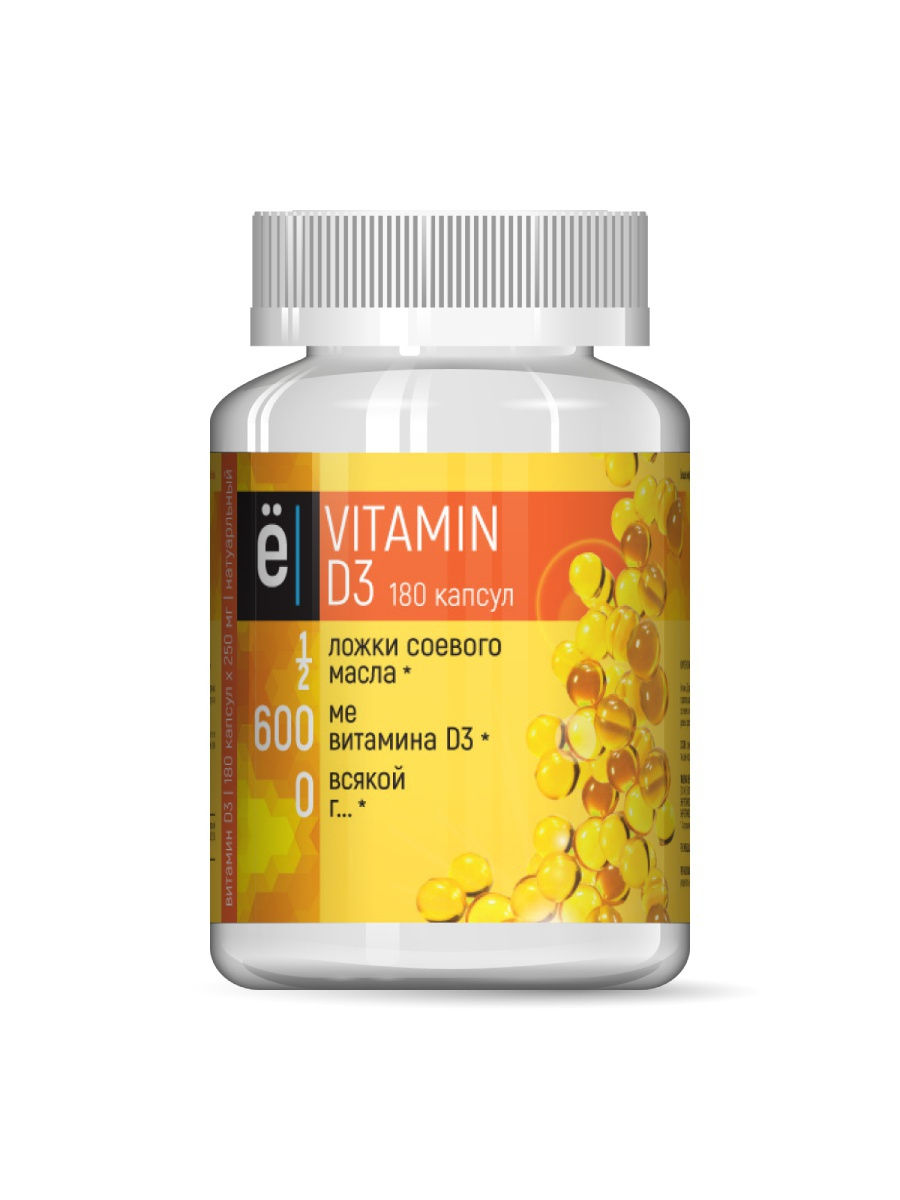
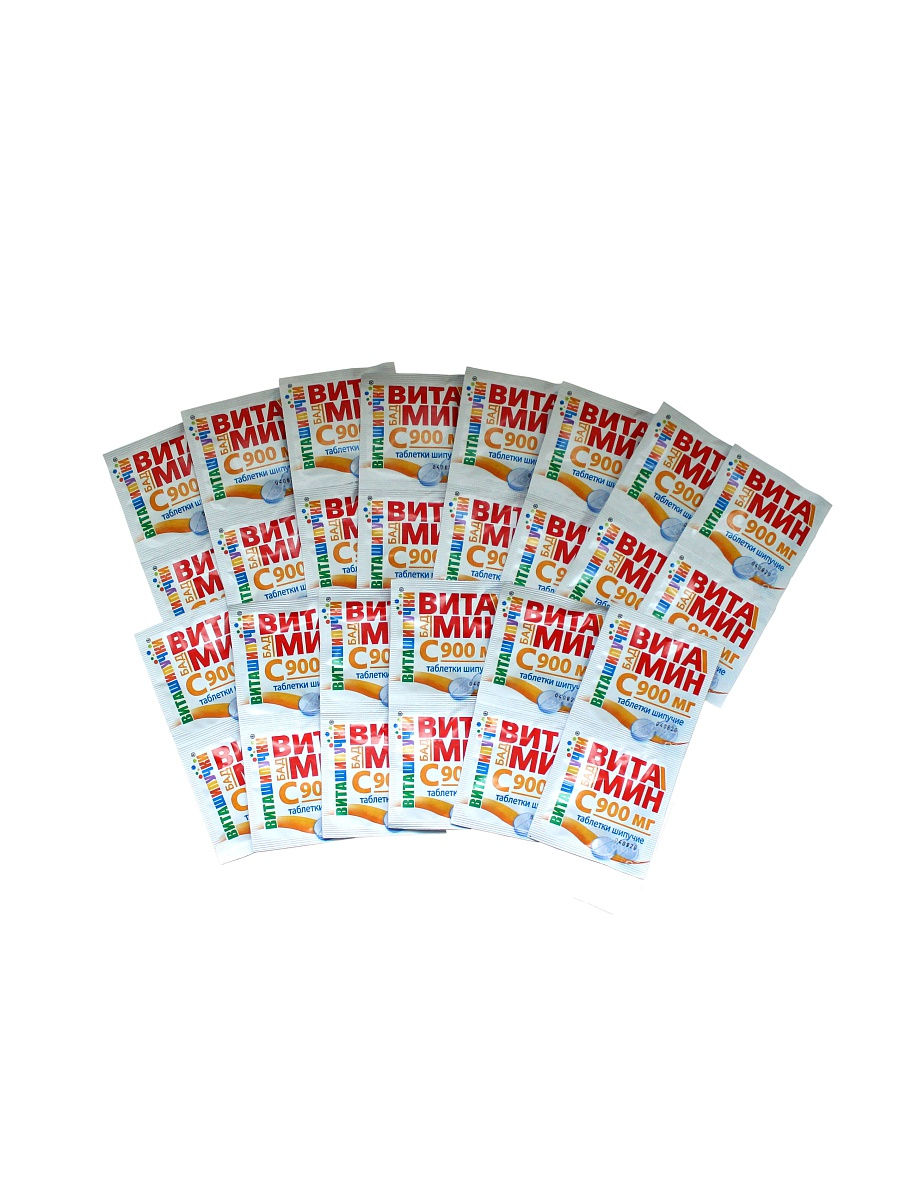




There are no reviews yet.